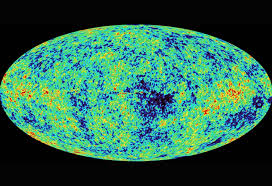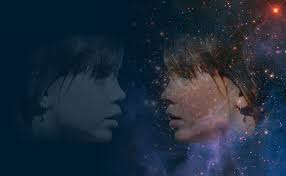Introduction
The concept of parallel universes has fascinated scientists and philosophers for decades. While the idea may seem like science fiction, various theories in cosmology and quantum mechanics suggest that multiple universes could exist. The distinction between a multiverse and a parallel universe is crucial—while the multiverse hypothesis suggests the existence of multiple universes, a parallel universe specifically refers to an alternate version of reality that coexists with our own. This article explores the theoretical foundations, scientific arguments, and intriguing implications of parallel universes.
Theories Suggesting Parallel Universes
1. Eternal Cosmic Inflation
The theory of eternal cosmic inflation proposes that the rapid expansion of space following the Big Bang may have led to the formation of multiple, separate universes. During cosmic inflation, the universe expanded exponentially due to immense energy. When certain regions of space ceased inflating, they could have formed distinct universes detached from our observable cosmos.
Given that inflation has continued since the Big Bang—over 13.8 billion years ago—some theorists estimate that approximately 10^50 universes could exist. However, while this supports the multiverse concept, it does not necessarily confirm the existence of a parallel universe where versions of ourselves exist with alternate realities. The probability of arranging the estimated 10^97 particles in the universe in a way that perfectly replicates our existence in another universe is extraordinarily low.
2. Brane Theory and Higher Dimensions
Brian Greene’s brane theory, derived from string theory, suggests that our universe exists as a “membrane” floating in a higher-dimensional space known as the “bulk.” According to this model, other universes may exist as separate membranes, parallel to our own, but are undetectable because they occupy different dimensions.
String theory posits that all matter and energy are composed of tiny vibrating strings. These strings exist in a universe with at least ten or eleven dimensions—far beyond the four-dimensional space-time that we perceive. If extra dimensions exist, it is plausible that other universes exist beyond our observational reach, with different physical properties and possibly alternate versions of reality.
Scientific Clues: Could Parallel Universes Leave Evidence?
1. Cosmic Microwave Background (CMB) Anomalies

The cosmic microwave background (CMB) radiation is the earliest light in the universe, dating back to 380,000 years after the Big Bang. When mapped, certain regions of the CMB exhibit temperature variations that some theorists suggest could be “bruises”—evidence of past collisions between our universe and another. These temperature variations appear as cold spots in the CMB data, which some believe indicate interactions with another universe in the distant past.
One of the most famous anomalies is the so-called “Cold Spot” in the CMB, a region significantly cooler than surrounding areas. Some physicists argue that this Cold Spot could be the result of a vast cosmic void, a region of space with lower-than-average matter density. However, others propose that it could be the imprint of a past collision between our universe and another parallel universe, causing gravitational disturbances that left a measurable effect on the CMB. If such an interaction did occur, it would provide strong evidence supporting the multiverse theory.
Although current observations remain inconclusive, future studies utilizing advanced telescopes and enhanced CMB data mapping may help determine whether these anomalies truly hint at parallel universes.
2. The Mirror Universe Hypothesis

A mirror universe is a hypothetical parallel universe where all events occur in a reversed manner, creating an exact reflection of our reality. Some theorists propose that during the Big Bang, two universes emerged—one dominated by matter (our universe) and another dominated by antimatter. This antimatter universe, if it exists, might exhibit time running in the opposite direction relative to ours.
The existence of dark matter—an invisible substance that does not interact with electromagnetic forces but has gravitational effects—has led to speculation that it could be composed of “mirror matter” from a parallel universe. While this idea remains speculative, it provides an intriguing explanation for dark matter’s elusive nature.
Quantum Mechanics and the Many-Worlds Interpretation
One of the strongest theoretical arguments for parallel universes comes from quantum mechanics, particularly the many-worlds interpretation (MWI). According to Schrödinger’s famous thought experiment, a cat placed in a box with a radioactive atom exists in a superposition—both alive and dead—until an observer opens the box and forces the system to collapse into one state.
MWI suggests that rather than collapsing, the universe splits into separate realities, each accommodating different outcomes. Every quantum event spawns a new branch of reality, leading to an infinite number of parallel universes. If this interpretation is correct, every decision, from flipping a coin to major life choices, results in diverging realities.
Further supporting this idea, quantum entanglement—the phenomenon where two particles become correlated regardless of distance—hints at deeper connections between multiple realities. Some theorists speculate that entanglement might be evidence of interactions across parallel universes. The possibility that information transfer or influence occurs between these universes remains an open question in quantum physics. Additionally, experiments with quantum computing, which relies on superposition and entanglement, may offer new insights into the nature of many-worlds.
While MWI provides a mathematically consistent framework, its implications challenge our conventional understanding of reality. If all possibilities occur in separate universes, the nature of identity, choice, and causality becomes far more complex than traditionally perceived.
The Mandela Effect: A Possible Connection?
The Mandela Effect refers to the phenomenon where groups of people collectively misremember historical events. Named after the false memory of Nelson Mandela dying in prison in the 1980s (when he was actually released in 1990 and became South Africa’s president), some believe that such inconsistencies could be evidence of subtle interactions between parallel universes.
While most scientists attribute the Mandela Effect to psychological factors like confabulation and suggestibility, some parallel universe theorists argue that shifts between realities might occasionally occur, leaving behind traces in human memory.
Implications and Challenges
If parallel universes exist, they would challenge our understanding of reality, causality, and identity. Philosophically, they raise questions about free will—if every choice leads to a separate universe, are we truly making decisions? Scientifically, detecting and confirming their existence remains a major challenge due to observational limitations.
Despite these difficulties, advances in quantum computing, particle physics, and cosmology may eventually provide insights into the nature of parallel universes. Until then, the question remains open: Are we truly alone in our reality, or are there countless versions of ourselves existing in unseen dimensions?
sources:
https://www.livescience.com/mirror-universe-explains-dark-matter
https://now.northropgrumman.com/parallel-universe-theory-what-are-the-chances-of-another-you
https://fastercapital.com/content/CMB-and-the-Multiverse–Clues-to-Parallel-Universes.html